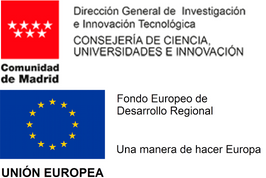- Decision Support Systems For Shared Mobility
- 2019 – 2021

Context
In recent years we have witnessed the emergence of new forms of mobility based on the collaborative economy and facilitated by information and communication technologies. Shared mobility solutions and ride hailing services are being implemented by public and private companies in the main European cities. These solutions are presented as the alternative capable of solving the problems of mobility, air quality and congestion in modern cities, promoting intermodality and reducing the cost and number of individual trips made in private transport. However, there is still little conclusive evidence of the real effects of these services, as well as on the optimal implementation and operation strategy to maximise their benefits. In particular, the knowledge about the characteristics of the users of these new forms of mobility, the use they make of them and the factors that promote or limit their adoption and use is very scarce.
The project
A correct estimate of the potential demand for shared mobility services, as well as better information on the mobility needs of the different user groups, is essential so that service providers can better adapt and manage their services or plan strategies for expansion. This information would also be very useful for planning mobility policies, allowing planners to design policies or measures to encourage the use of these mobility modes where they bring benefits and discourage them in areas where they generate more congestion or compete with transport. public. The project DSS4SM (Decision Support Systems For Shared Mobility) proposed the development of new demand prediction models based on empirical data from several of the existing shared mobility systems in the city of Madrid, with the ultimate goal of generating decision support tools for the planning and operation of these services.
DSS4SM’s goals
The goal of the DSS4SM project was to develop a decision support system for the strategic planning and management of shared mobility services. To achieve this goal, the following specific objectives were proposed:
1. Understand and characterise in depth the profile of shared mobility users and the use they make of these services: sociodemographic characteristics of users, number of trips per user, travel distance, reason for trips, etc.
2. Formulate, calibrate and validate demand models capable of predicting the adoption and use of a specific shared mobility system based on the characteristics of the city or region in which it is planned to be implemented, its transportation system and the shared mobility system to implement.
3. Develop tools for the planning of shared mobility services that support expansion decision-making, taking into account the expected behaviour of demand. These tools would be used to evaluate both service deployment decisions in new cities or regions and decisions to expand or reduce the coverage area of existing services, by predicting expected revenues and costs in different alternative scenarios.
4. Develop tools for the operation of shared mobility services that support decision-making in the management of services already deployed, taking into account the expected behaviour of demand. These tools would be used to optimise tariff policy decisions (discounts in off-peak hours, travel incentives that allow vehicles to be relocated to areas of higher demand, etc.) and maintenance strategies (including battery recharging, in the case of systems based on in electric vehicles) and relocation of vehicles (for example, optimization of the sites where vehicles leaving the workshop are returned to the city to increase their turnover), with a view to maximising the profitability of the service by increasing revenues and reducing operating costs.
5. Integrate the developed tools into a decision support system equipped with visualisation and visual analytics functionalities that allow users to evaluate decisions regarding both deployment (new cities, service coverage area, number of vehicles) and operation (strategies of vehicle maintenance and relocation).
Results
DSS4SM enabled the development of a prototype decision support tool for shared mobility services operators. The most significant results of the project can be summarised as follows:
- The development of a prototype strategic planning and operational support tool equipped with a suite of indicators to facilitate decision-making for shared mobility operators.
- The creation of an interactive visualisation tool for geolocated indicators seamlessly integrated with the strategic planning and operational support tool.
- The acquisition of in-depth knowledge in artificial intelligence and machine learning technologies applied to mobility analysis.
The project contributed to the acquisition of key knowledge, both for the continued development of the company’s R&D agenda and for the design and development of cross-functional software components of great relevance for several products offered by the company. Additionally, the evolution of DSS4SM paved the way for subsequent projects such as AVENUE and SHAPEMOVE, enabling the prototype to reach a stage ready for commercialisation. This enhanced capability has significantly expanded Nommon’s range of commercial offerings.

DSS4SM is a research project co-funded by the Madrid Regional Government and the European Regional Development Fund (ERDF). "A way to make Europe"
